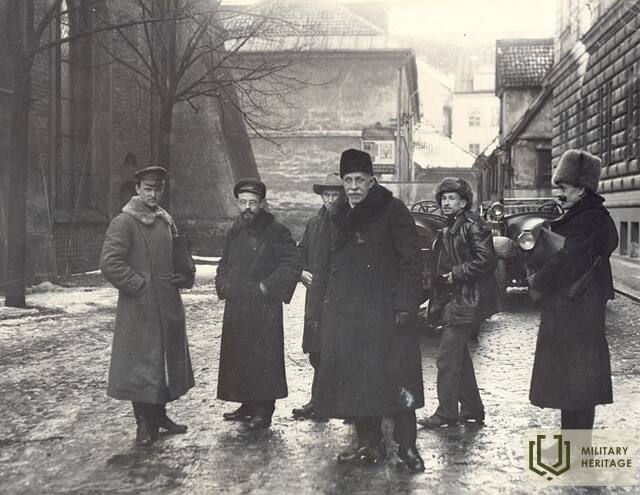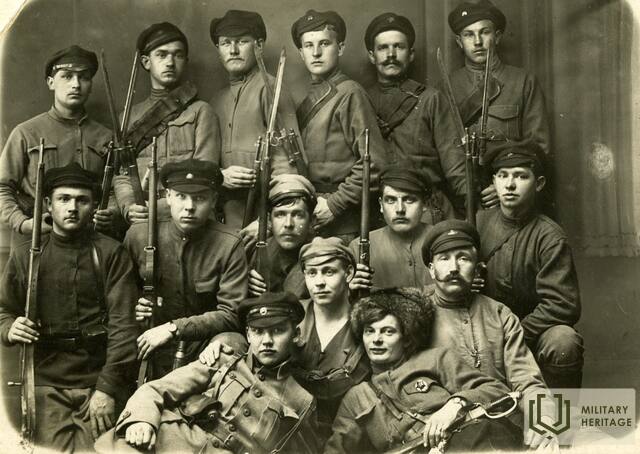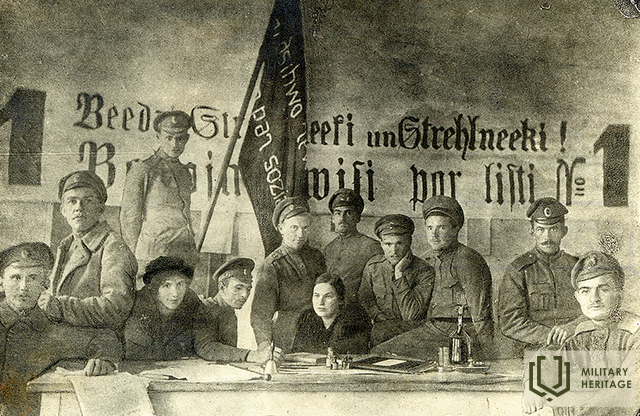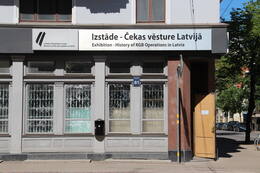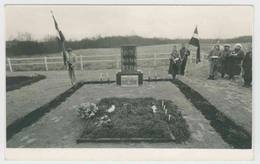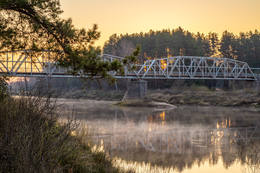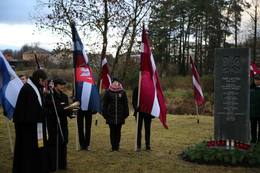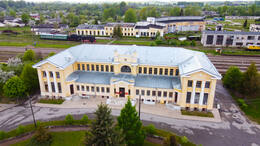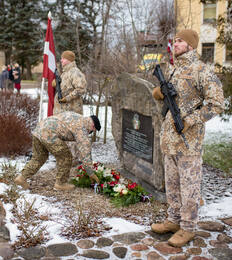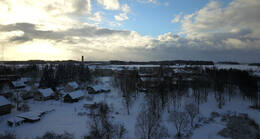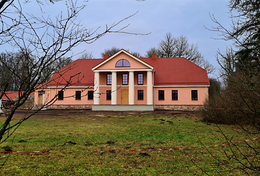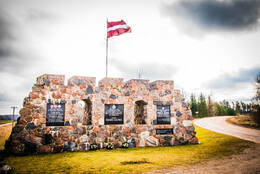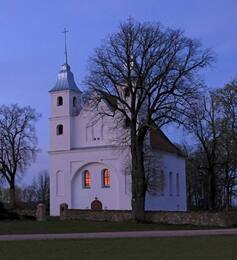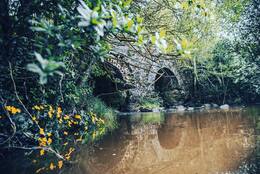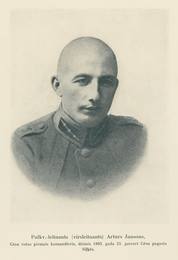Didieji I WW1, I Nepriklausomybės karai
Lyeliniki buvo radikalus Rusijos socialdemokratų darbininkų partijos sparnas, kuris 1912 m., vadovaujant Vladimirui Uljanovui (Leninui), gavo daugumą partijos suvažiavime ir atsiskyrė nuo partijos, sukūręs Rusijos socialdemokratų darbininkų partiją (bolševikus). Nuo tada terminas „didieji vaikinai“ taip pat buvo įvestas, o ne „maži vaikinai“ ar mažuma.
Didžiuliai nuo mažųjų skyrėsi tiek ideologiniais, tiek partiniais organizaciniais aspektais. Didžiuliai manė, kad vakarėlį reikia organizuoti kaip centralizuotą kovos organizaciją. Renkant narius reikėjo griežtai laikytis klasės principo. Partijos nariai turėjo laikytis drausmės, griežtai paklusti partijos vadovybės – CK – sprendimams. Pagrindinę partijos struktūrą turėjo sudaryti palyginti nedidelė profesionalių revoliucionierių grupė. V. Leninas manė, kad darbininkų klasė nepajėgi savarankiškai plėtoti socialistinių reikalavimų.
Didieji manė, kad socializmas negali būti pasiektas evoliuciniu keliu (laipsniškomis reformomis), o greičiau per smurtinę revoliuciją ir proletariato, kaip pereinamojo režimo iš kapitalizmo į socializmą, diktatūrą. Bajorai griežtai priešinosi bendradarbiavimui su piliečių (buržuazijos) atstovais, leisdami tik tam tikrais išimtiniais atvejais. Bajorai iš principo atmetė parlamentinę demokratiją, nes tikėjo, kad ji tarnauja buržuazinės klasės interesams. Jie agitavo už darbo žmonių (proletariato) klasių atstovavimą, o ne atstovavimą visos šalies mastu.
1917 metų lapkričio 7 dieną Rusijos sostinėje Petrograde (dabartiniame Sankt Peterburge) bolševikai įvykdė perversmą, nuvertę Aleksandro Kerenskio vadovaujamą Laikinąją vyriausybę ir įkūrę V. Lenino vadovaujamą sovietų vyriausybę. Bajorų valdomoje Latvijos dalyje 1917 metų pabaigoje pamažu valdžią perėmė Latvijos darbininkų, kareivių ir bežemių deputatų tarybos vykdomasis komitetas arba Iskolats (sutrumpintas vardo vertimas į rusų kalbą). Naujoji valdžia pradėjo radikalias politines ir socialines reformas, įvedė griežtą cenzūrą.
Sovietų valdžios laikotarpis neokupuotoje Latvijos dalyje nebuvo ilgas – truko vos kelis mėnesius. Vokietijai atnaujinus karo veiksmus Rytų fronte ir 1918 m. vasario pabaigoje okupavus visą Latvijos teritoriją, Vidžemės ir Latgalos bolševikų režimas buvo sunaikintas. Didikai ir ištikimiausia šaulių dalis pabėgo į Rusiją.
Per šiuos kelis mėnesius kai kurie Latvijos gyventojai galėjo iš pirmų lūpų pamatyti, kaip veikia bolševikinis režimas. Mokyklos veikla atskleidė keletą tendencijų, kurios visiškai pasireiškė po metų, sugrįžus bolševikams. Tai buvo: režimo nedemokratiškumas, valdžios sutelkimas siauro partijos darbuotojų rato rankose; demokratiškai išrinktų institucijų likvidavimas ir saviraiškos laisvės ribojimas; klasių kovos principo įgyvendinimas, atnešęs represijas prieš ištisas visuomenės grupes; ekonomines reformas, pasireiškusias daliniu įmonių nacionalizavimu, dvarų konfiskavimu, nusistatytu kursu viso turto ir žemės nacionalizavimo link.
Savo tikslu laikydamas komunizmo įvedimą, bolševikų partija po 1917 m. perversmo pasivadino Rusijos komunistų (bolševikų) partija ir šį pavadinimą išlaikė iki 1925 m. 1925–1952 m. partija vadinosi „Visasąjunginė komunistų (bolševikų) partija“, o 1952–1991 m. – „Sovietų Sąjungos komunistų partija“. 1991 metais partija Rusijos Federacijoje buvo likviduota.
Daugiau informacijos šaltinių
1. Latvijos bolševikai. Paskelbta portale ir.lv, 2018-01-03. Prieiga: https://ir.lv/2018/01/03/latviesu-lielinekie/ [žiūrėta: 2021 05 06.].
2. Šiliņš J. „Didieji vyrai“. Nacionalinė enciklopedija. Prieiga: https://enciklopedija.lv/skirklis/88272-lielinekie [žiūrėta 2021 05 06.].
3. Šiliņš J. Daktaro darbas „Tarybinės Latvijos karinė ir politinė raida (1918 m. gruodis – 1919 m. birželio mėn.)“, 2012 m. Prieiga: https://dspace.lu.lv/dspace/handle/7/4674 [žiūrėta: 2021 05 06].
4. Sielų pūga. Skaitmeninis muziejus. Prieiga: https://www.dveseluputenis.lv/lv/laika-skala/notikums/85/ziemassvetku-kauju-sakums/ [žiūrėta: 2021 05 06.].
Susijusi laiko juosta
Susijusios vietos
Exhibition in the KGB Building "History of KGB Operations in Latvia"
The former USSR State Security Committee (commonly known as Cheka) building is open for visitors. Here chekists imprisoned, interrogated and murdered Latvian citizens who were considered opponents by the occupation regime. There is also an exhibit from the Latvian Occupation Museum on the activities of Cheka in Latvia. Guided tours of the prison cells, corridors, basement and courtyard are available. The house was built in 1911 and it is one of the most beautiful buildings in Riga. Called the ‘Corner House’ by the people, it was the scariest symbol of the Soviet occupation regime in Latvia, and also one of the pillars of power of the USSR. Cheka operated from the Corner House during the occupation from 1940 to 1941 and then again from 1945 to 1991. Tens of thousands of Latvians were affected by direct political persecution. The fight against enemies of Soviet rule continued also after World War II. Cheka’s approach towards its operation slightly changed after Stalin’s death. Physical torture was replaced by psychological terror. The majority of Cheka agents were Latvians (52%). Russians were the second largest group – 23.7%. 60.3% of the agents were not members of the Communist Party. 26.9% of the agents had higher education. The system was designed in a way to involve local people and thus have greater control over the society. Staff documents and service records are located in Russia. And these materials have not been made available to Latvian authorities and researchers.
Memorial stone for the green partisans
It is located at the corner of Parka and Saules streets in Ergļi, near the railway viaduct.
On May 23, 1919, the green partisans attacked a column of Vezumniki of the greats in the center of Ergli. The battle lasted two hours, and the partisans got 78 horses and many carts with rifles and other goods. Four partisans died in the battle, and one was injured. In total, 61 men fought in the ranks of the partisans in the county, six of whom died.
On May 21, 1939, a memorial stone of the 121st Eagle Regiment was opened in the village of Eagles at the place where the green partisans Jānis Andriksons, Andrejs Bumbers, Kārlis Baņgieris and Jānis Gūts fell on May 23, 1919.
During the Soviet occupation, the memorial sign at the intersection of Parka and Saules streets was demolished. It was restored and re-installed on April 22, 1989.
Iron bridge over Gauja in Valmiera
It is located in Valmiera, near the Gīme nature trail on Leona Paegles street.
The steel construction iron bridge over the Gauja was built in 1911. It connected the 114 km long route Ainaži-Valmiera-Smiltene, which was last completed in 1971.
After the liberation of Riga, on May 22, 1919, parts of the Soviet Latvian army, without showing serious resistance, retreated along the entire front. On May 26, the Estonian National Army and the Northern Latvian Brigade led by Colonel Jorģs Zemitān occupied Valmiera. "The bigots blew up the railway bridge around six o'clock in the afternoon. At 7:50 both wooden bridges were also set on fire. This did not prevent Estonian troops from entering the city from the side of the Valmiera manor in the evening of the same day* [..]"
Today, the iron bridge is a favorite place for recreation and walking and a section of the "Green Railway" bicycle route.
* The cadet company of the 6th Estonian Infantry Regiment was the first to arrive, accompanied by several armored vehicles.
Memorial stele for the knights of the War Order of Lāčplēš
It is located next to the Roman Catholic Church of the Heart of Jesus in Viļaka.
The memorial stele for the knights of the Lāčplēš War Order in Viļakas region was opened on November 11, 2017. The destinies of 28 Lāčplēš Knights of the Military Order are connected with the name of Viļakas county.
The granite stele was created as part of the project "Remember Lāčplēšus" dedicated to the centenary of the Latvian state. Commemorative stelae of a uniform model will be installed throughout Latvia in honor of the soldiers who died in the Latvian Freedom Struggle. The initiator of the project is the Jaunsardze and Information Center.
Five knights of the Lāčplēš War Order, whose names are engraved on the memorial stele, lived in the territory of the present-day Viļakas district after the end of the Freedom Struggle:
– Jānis Kuļšs was a young farmer in Apsīs, Šķilbēni parish,
– Aleksej Lyubimov (Lavrentiev) lived on the Fortepianova farm in Šķilbēni parish, later in Vilaka,
– Teodors Mende managed the farm assigned to him and was a forest guard in the village of Katleši, Žigur parish,
– Eduard Tennyson lived at Vecumu station, later lived in Chabatrova village and worked at p/s "Viļaka",
– Jānis Burmeisters after 1928 lived in Šķilbēni parish for some time.
The brothers' cemetery in Viļakas county is the resting place of 45 soldiers who gave their lives in 1920, defending Latvia from bigots. January 9 was the day when the attacks began in North Latgale, and despite the difficult weather conditions at that time, Viļaka was also liberated on the same day.
In the battles for the liberation of Latgale, Estonian soldiers also fought side by side with Latvian army soldiers and partisans against the Red Army in Viļakas county. Many of them gave their lives for a free Latvia.
Gulbene Railway Station
The Gulbene Railway Station is located in the city of Gulbene. During World War I, in 1916 to 1917, the narrow-gauge railway line to Pļaviņas was reconstructed to 1,524 mm width to ensure that it can serve as a connection to the Rīga-Daugavpils line. In addition, a railway line to Ieriķi and to Sita was constructed, thereby establishing a connection with Pytalovo. As a result, Gulbene became a railway hub. The current station building by architect Pēteris Feders was constructed in 1926. During the War of Independence, on 31 May 1919, when Gulbene was liberated from the Bolsheviks, the 1st (4th) Valmiera Infantry Regiment collected a significant number of war trophies here. On 14 June 1941, both civilians and Latvian Army officers arrested in the Litene Summer Camp were deported from the Gulbene Railway Station. As a key hub, it was bombed in the spring of 1944. After the war, it was restored to its original form. An educational and interactive centre named ‘Railway and Steam’ was opened in 2018. Next to the Gulbene station is the company SIA Gulbenes – Alūksnes bānītis, which offers interactive lessons and tours. Visitors have access to the station building and platform, a memorial plaque and a monument to the repressed ones by sculptor Indulis Ranka.
Battle of Skrunda Memorial and Flag Day
The Skrunda Battle Memorial is located in the centre of Skrunda, in Oskaras Kalpaka Park near the Skrunda Culture House, at the intersection of Kuldīgas and Liepājas Streets. In 2005, a stone was erected at the memorial commemorating the battle of 29 January 1919, when the battalion commanded by Oskars Kalpaks, together with the German and Russian units of the Landeswehr, liberated Skrunda from the Bolsheviks. The tradition of Flag Day has been maintained since 2004, commemorating the first town liberated from the Bolsheviks and its liberators, who raised the Latvian flag at the Skrunda church on 29 January 1919.
During the first months of the War of Independence, the Latvian Provisional Government, under pressure from the Bolsheviks, was rapidly losing territory. On 22 January 1919, the Bolsheviks captured Skrunda. A week later, in the early hours of 29 January, the offensive to recapture Skrunda began. The Latvian Separate Battalion under Lieutenant Colonel Oskars Kalpaks was to attack along the Rudbāržu-Skrunda highway and drive the Bolsheviks out of Skrunda. This would be followed by a flank attack by German units with the task of destroying the advancing enemy, while the Russian company would attack between the Latvian and German units, using the Skrunda church as a landmark. The attack was also supported by a German artillery battery. On the day of the attack, the frost was 15 degrees, the sun shone brightly, the Kalpaks had to cross a clear field, and the Bolsheviks were sheltering in the stone buildings of the manor. The Bolsheviks opened fire when the chain of attackers was about 300 metres away, a two-way firefight broke out, and the soldiers under Oskars Kalpaks' command advanced in a rapid advance, forcing the enemy to cease fire and retreat across the Venta. After about 3 hours of fighting, Skrunda was captured at about 9am, with the Latvian Separate Battalion having only 2 wounded.
The Battle of Skrunda was of great importance for the morale of the Latvian Provisional Government's armed Spek soldiers, as it was in fact the first significant victory in the battles against the Bolsheviks. Moreover, the commander himself, Oskars Kalpaks, showed particular courage in the battle, encouraging the soldiers by his example not to be afraid.
Jaunmuiža and the 1st Latvian Separate Battalion
Nowadays Jaunmuiža, formerly Jaunāmuiža, is a populated place in Kuldīga Municipality and is located on the road Skrunda - Ezere, 7 kilometres. The settlement was established on the site of the former half-manor house of Jaunā manor (Neuhof).
On 3 March 1919, an intense battle took place for this place between units of the 1st Latvian Separate Battalion led by Colonel Oskars Kalpaks and units of the 2nd Soviet Latvian Rifle Regiment.
On 3 March 1919, Operation Tauwetter (Thaw), the liberation of Courland, began, in which the VI Reserve Corps of the German Army, with the Landeswehr and its 1st Latvian Battalion, launched an offensive across the front with the intention of pushing the Bolshevik units back to Lielupe. In the early morning of 3 March, units of the 1st Latvian Separate Battalion - Cēsis Company, Student Company and Cavalry Division, reinforced by the artillery battery of German Hauptmann Müller, crossed the Venta at Lėnai and attacked the Jaunai Manor, defended by the 2nd Battalion of the 2nd Soviet Latvian Rifle Regiment. During the several-hour-long battle, gradually occupying the houses in the vicinity of Jaunā muiza, Kalpaka's commanded units reached Jaunā muiza and intercepted the Skrunda-Pampali highway, interrupting the enemy's movement and pushing the enemy eastwards. In Jaunāmuiža the battalion received stationery and ammunition as trophies. Taking up positions in nearby houses the battalion fortified itself. On 5 March the Bolshevik counter-attack began, which was stopped by the evening. On 6 March the battalion resumed the attack, taking the Skrunda school and advancing towards the Airite - Aizupji area.
Lēnu Manor
The manor castle is located in the village of Lēnu, by the Venta River. The castle is currently privately owned and can therefore only be seen from a distance.
The manor house was used as a support point by the 1st Latvian Separate Battalion from the end of January to 3 March 1919. The Latvian Separate Battalion had to liberate the surroundings of Leni Manor in order to be able to cross the river opposite Jaunmuiža.
The manor belonged to Baron Friedrich von Firks, who also owned the Rudbāržzi and Sieksate manors. The manor house was built in the 19th century. For the Baron, the castle of Lēnu served mainly as a place for hunting and weekend relaxation.
From 1927 to 1937 the castle was a school, and during the Soviet occupation it was a collective farm woodshop. In 1965, a community centre was opened. The ensemble of buildings has suffered many alterations and the park has not been preserved. Several outbuildings have survived.
Memorial to the 1st Latvian Separate Battalion in Lėnai and relocation site on the Venta
The monument is located in Lēņi, at a road crossroads near Lēņi Manor.
The monument was unveiled on 8 November 2007. It was designed by sculptor Maija Engele. The author and financier of the monument is Jānis Blūms, whose father, Lieutenant Paulis Blūms, 1st Lieutenant of the 1st Separate Latvian Battalion Cavalry Division, organised and led the river crossing on 3 March 1919 with the help of 10 men.
Every year on 3 March, young guards, servicemen and other interested persons gather here for a commemorative event in honour of the 1st Latvian Separate Battalion.
Holy Trinity Roman Catholic Church in Lēni
The church is located in the village of Lēnu, Nīkrāce parish, Skrunda municipality, on the Skrunda - Embute road.
The Venta River is located near the church, the banks of which were guarded by soldiers of the 1st Separate Latvian Battalion in February 1919. As the battalion's numbers did not allow for a continuous front line, the front was guarded by sentry posts. One of them was also located on the bank of the river near the church. The church towers were useful for surveillance of the surrounding area and the other side of the river.
Battle at Skrunda school
Skrunda School is located in Pumpuri, at km 3 of the Skrunda - Ezeres road. The school is privately owned and can therefore be viewed from a distance.
In January and March 1919, the 1st Latvian Separate Battalion fought with units of the 2nd Latvian Rifle Regiment of Soviet Latvia near the school.
The battle near Skrunda School took place on 22 January 1919. In the face of the retreating Bolshevik superiority, German and Latvian units positioned themselves on the western bank of the Venta, while Bolshevik forces gathered in Saldus in preparation for a wider operation, at the same time sending some of their forces in the direction of Skrunda. In order to seize the initiative and try to defeat the Bolshevik forces piecemeal, on 22 January the Cēsis Company of the 1st Latvian Separate Battalion, reinforced by 15 soldiers of the Officers' Company and the German Raden Company in the Skrunda sector of the front, had to attack towards Saldus. The Skrunda School was designated as the assembly point for both companies. However, during the preparatory phase of the attack, both companies were surprised by a Bolshevik attack, which forced the German and Latvian units to retreat to Rudbārži.
The second clash at Skrunda School took place on 6 March 1919, when the Cēsis and Student Companies of the battalion commanded by Colonel Oskars Kalpaks surprised the enemy and captured Skrunda School and continued to advance towards Dutēni, Engurnieki and Airīte.
On the side of the Skrunda-Ezeres road, near the school, where the road crosses the Klūga river, there is a small, ancient stone bridge from the late 19th century with two semi-arched arches for the river to pass through. The road leading over the bridge used to be used in the past, but is now gradually becoming overgrown with grass as the adjacent tarmac road and bridge are now used. From this bridge, the stone bridge offers a magnificent view, enriched by the rocky riverbed and the banks covered with thick trees. The site is visually very attractive and suitable for cycling or walking routes.
Monument to Cēsis ornaments at the site of the first battle
Located in Drabešu parish, 79th kilometer of Vidzeme highway.
A monument made of granite can be seen, in which a stylized scheme of the invasion of the Bolsheviks was carved.
The monument has been discovered and consecrated. December 28, 2018. In Drabešu Parish, on December 24, 1918, the reconnaissance team of Captain Artūrs Jansons (1893 - 1941) prevented the Red Army scouts from moving from Cēsis to Ieriķi with a heavy machine gun fire. It was the first armed clash of Latvian troops with the Red Army of Soviet Russia.
Susijusi istorija
Šiaurės Latgalos išvadavimas iš bolševikų
1918 m. gruodžio 1 d. Raudonosios armijos daliniai, paremti Raudonųjų šaulių daliniais, įsiveržė į Latvijos teritoriją. Siekdami apsaugoti savo namus, šeimas, gimtuosius rajonus, pabėgti nuo siaubo, Balvi apylinkių vyrai griebėsi ginklo ir ėjo į miškus, pradėjo kurtis pirmosios „žaliosios“ grupės. 1919 m. pavasarį, kai buvo paskelbta mobilizacija, daugybei Balvų apylinkių vyrų kovoti sovietinėje Latvijos armijoje atrodė nepriimtini ir jie prisijungė prie „žaliųjų“ grupuočių. Susikūrė Balvų, Silakrogo, Rugėjų, Teterių-Dūrupės ir Liepnos grupės. „Žaliųjų“ grupių veikla Balvių apylinkėse suaktyvėjo 1919 metų kovo mėnesį.
Apie tautos patriotą pirmąjį leitenantą Vilį Gelbį
Pulkininko leitenanto Vilio Gelbės (1890-1919) likimas atspindi sunkią mūsų valstybės ir kariuomenės formavimosi situaciją bei šių įvykių vertinimą.
1918 m. lapkričio 18 d. paskelbus Latvijos valstybę, prasidėjo ir jos Nepriklausomybės karas bei ginkluotųjų pajėgų kūrimo darbai. Latvių karių savanorių priešakyje buvo Kuržemėje gimęs karinio jūrų laivyno leitenantas Vilis Gelbė.
Apie Latvijos nepriklausomybės karą ir 1918 metų įvykius Alūksnėje
1918 m., vokiečių kariuomenei įžengus į Alūksnę, latvių šaulių batalionai pasitraukė į Sovietų Rusiją. Iki 1918 m. gruodžio pradžios įsitvirtino vokiškas režimas ir buvo vykdomos pertvarkos. Vokietijai pasidavus kare, bolševikai grįžo į Alūksnę ir atkūrė savo valdžią. Suomijos savanoriai taip pat kovojo Latvijos nepriklausomybės kare kaip Estijos kariuomenės dalis. 1919 m. vasario 21 d. Alūksnėje, prie stoties, vyko įnirtingos kautynės tarp bolševikų ir suomių savanorių pulko „Šiaurės berniukai“.
Apie Latvijos nepriklausomybės karą ir 1919 metų įvykius Alūksnėje
1919 m. kovo 27 d. 1-asis Valmieros pėstininkų pulkas kartu su Estijos gvardijos (kaitselit) Talino (tuomet Rėvelės) ir Tērbato batalionais bei trimis šarvuotaisiais traukiniais nuo Melnupės upės krantų pradėjo Latvijos išvadavimą nuo bolševikų.
Anšlavo Eglītio prisiminimai apie Latvijos nepriklausomybės karą ir 1919 metų įvykius Alūksnėje
1919 m. kovo 27 d. 1-asis Valmieros pėstininkų pulkas kartu su Estijos gvardijos (kaitselit) Talino (tuomet Rėvelės) ir Tērbato batalionais bei trimis šarvuotaisiais traukiniais nuo Melnupės upės krantų pradėjo Latvijos išvadavimą nuo bolševikų.
Suomijos savanorių pulko „Šiaurės berniukai“ mūšis Bejoje
1919 metų vasario 23 dieną suomių savanorių pulko „Šiaurės berniukai“ žvalgybos dalinys, tikėdamasis gauti papildomų ginklų ir amunicijos, atvyko į Beja School upės daubą, kur įvyko susirėmimas su bolševikais (Babeckos mūšis). Šiame mūšyje krito 10 suomių pulko karių.
7. Siguldos pėstininkų pulko formavimas
1919 m. birželio 20 d. Naukšėnų dvare, Rūjienos apylinkėse, pagal Šiaurės Latvijos brigados vado pulkininko Jorgio Zemitano įsakymą pradėtas formuoti 7-asis Siguldos pėstininkų pulkas. Iš pradžių iš Šiaurės Latvijos brigados rezervinio bataliono buvo suformuota nedidelė kovinė grupė, kurią sudarė 22 karininkai ir 1580 karių, kuri pirmojo vado Oskaro Dankerio garbei buvo pavadinta Dankerio divizija. Po kelių dienų dalinys buvo įtrauktas į 3-iojo Jelgavos pulko 2-ąjį batalioną, o rugpjūčio 23 d., papildžius kuopa, į 7-ąjį Siguldos pėstininkų pulką.
Šiaurės Latvijos kariuomenės įkūrimo Rūjienos pusėje fragmentas
Šiaurės Latvijos armija buvo Latvijos karinė formacija Latvijos nepriklausomybės karo metu, kuri buvo suformuota 1919 m. vasario 3 d. – kovo 31 d. Estijos teritorijoje ir Estijos kariuomenės išlaisvintuose šiauriniuose Vidžemės regionuose. Iki 1919 metų liepos brigada logistikos ir operacijų atžvilgiu buvo pavaldi Estijos ginkluotųjų pajėgų štabui ir Estijos kariuomenės vyriausiajam vadui. Tada ji buvo sujungta su Pietų Latvijos brigada ir suformuota Latvijos armija.
Cėsių mūšio pradžia, eiga ir pabaiga
Pergalei Cėsių mūšyje buvo lemta tapti lūžiu latvių ir estų kovoje už savo šalies nepriklausomybę. Ši pergalė padarė tašką Andrievo Niedros vyriausybės ir vokiečių generolo Rüdigerio von der Goltzo planams užkariauti Baltijos šalis. Vietoj to Liepojoje savo veiklą atnaujino Laikinoji Latvijos vyriausybė, vadovaujama Kārlio Ulmanio.
1-ojo latvių atskirojo bataliono kirtimas per Ventą 1919 m. kovo 3 d.
Vienas pagrindinių iššūkių 1-ojo latvių atskirojo bataliono daliniams buvo perplaukti užšalusią Ventos upę ir nutiesti per ją kelią.
Kapitono Aleksandro Levingo prisiminimai apie žvalgybą virš Ventos prie Lenos
1919 m. vasarį abipus Ventos upės aktyviai veikė žvalgybinė veikla. Kapitonas Aleksandras Loevingas, kavalerijos divizijos viršininkas, buvo vienas iš žvalgybinių reidų vadų.
Mūšis prie Skrundos mokyklos 1919 metų sausio 22 d
Vado leitenanto Jānio Īselio prisiminimai apie kautynes Skrundos mokykloje 1919 m. sausio 22 d.
Iš Ádolfo Erso knygos „Vidzeme kovoje už laisvę“ apie pabėgėlių kelionę Valkoje
Nuo pabėgėlių laikų Valkai buvo suteiktas svarbesnis vaidmuo nei kitiems Vidžemės miestams, nes čia veikė politiškai aktyvus laikraštis „Līdums“, kuriame buvo kaldinami Latvijos dvasiniai ir politiniai ginklai, taip pat dėl to, kad čia susiliejo keliai iš trijų Latvijos pusių: iš Rygos, Alūksnės, Mozekilės, taip pat iš Estijos ir Rusijos. Ji turėjo ryšių su pabėgėliais iš visų pusių – Tartu, Pliska, Maskva ir Sankt Peterburge. Čia buvo didelis pabėgėlių centras.
Kaip Latvijos valdžios pareigūnai kvailino Pampalio šalininkus bolševikus
Buvęs Pampalių mokyklos direktorius (iki 1959 m.) Alfredas Brūnsas asmeniškai parašė įspūdingą knygą apie Pampalių mokyklos istoriją ir su ja susijusius istorinius įvykius su autentiškomis nuotraukomis. Alfredas Brūns knygoje aprašo Nepriklausomybės kovų įvykius Pampaliuose, išsamiai aprašydamas įvykius, kuriuose dalyvavo Latvijos valstybės veikėjai, bolševikų rėmėjai, vokiečių kariuomenės veiksmai ir kt.




